Daisy Hill Conservation Park
April 13, 2011
When we left for the voyage I had promised Iseline that we would go to a place where we could see wild kangaroos. That place was Daisy Hill Conservation Park. I used to travel to Brisbane once a year through my work and almost every time I did a small hike in this park, which is really a protected area of eucalyptus forest. I had lied a little bit to Iseline, since the animals you encounter here are wallabies, not kangaroos. They’re the same really, just smaller. There is also a population of koalas here.

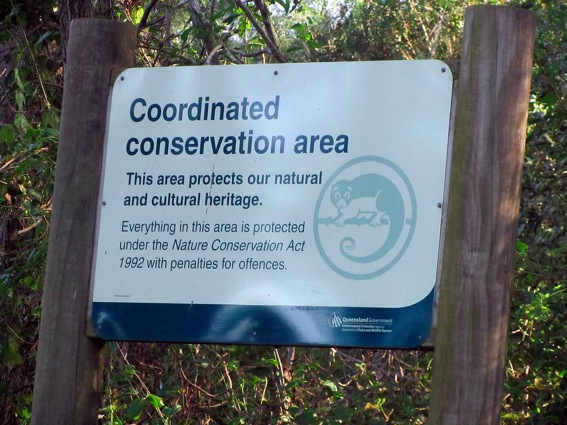
We got up relatively early, since the wallabies tend to be around in the most easily accessible areas in the morning. We hadn’t walked more than a few hundred meters/yards from the parking lot before we saw the first ones. They are really cute, and Iseline immediately went “awhhhhh”
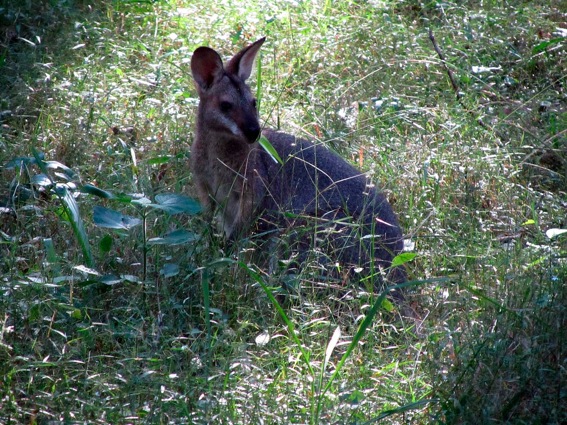
This is about as close as we got to them, before they jumped along in the way everyone old enough knows from Skippy:


Iseline was very happy and immediately started drawing one of them. Here she is with her drawing:
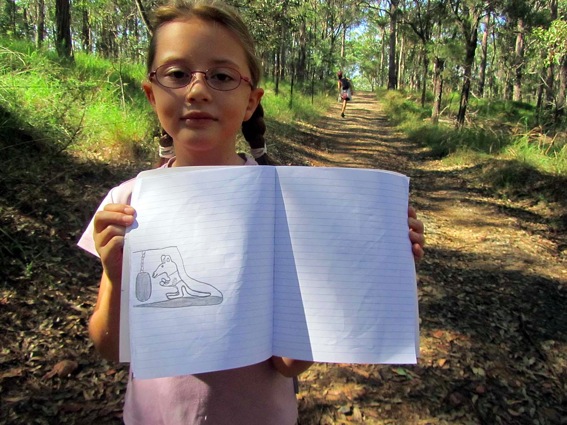
As you can see, the wallaby is boxing and has a baby in its pouch:
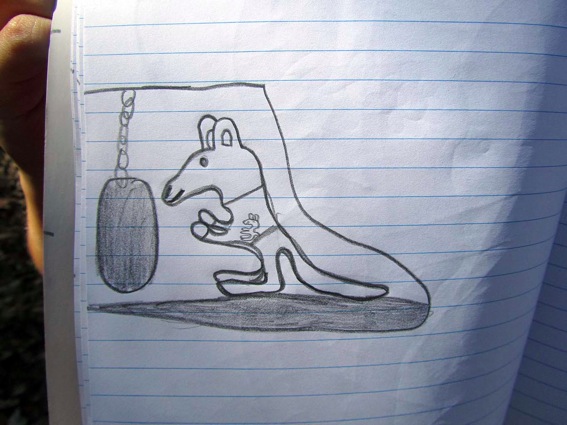
We decided to do the Stringybark Trail through the eucalyptus forest:
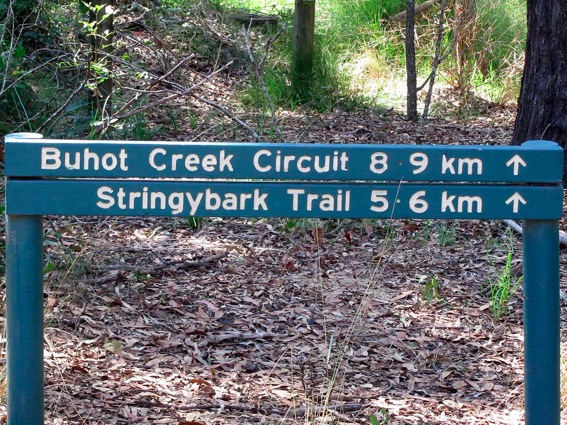
The wild koala bears here are very difficult to spot. Since they sleep over 20 hours per day, they don’t move much, and blend in with the trees. Normally they sleep very high up. Warwick had told us to keep looking for termite nests way up in the trees, they were normally koalas and not termites. We kept looking all along the trail and our necks were aching at the end, but no koalas were spotted.
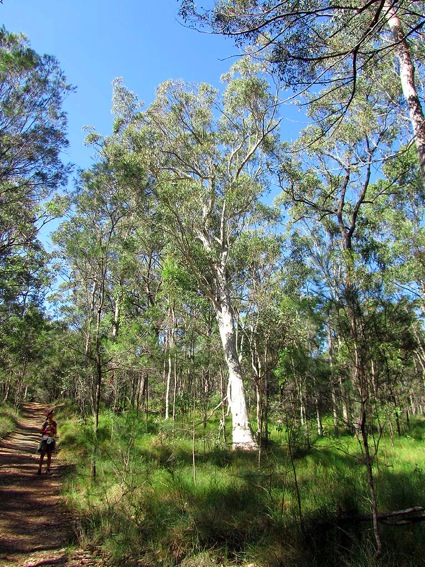
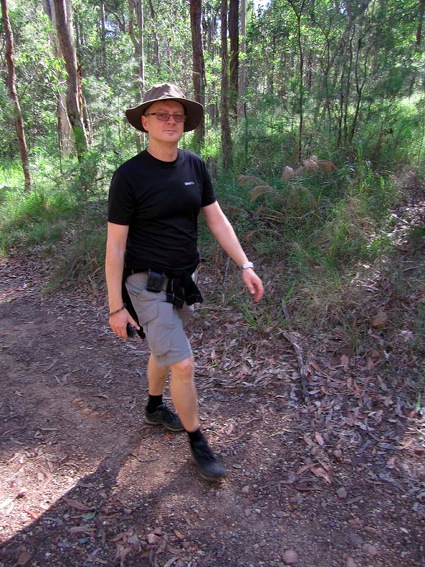
Two boys and a termite hill. It was definitely not a koala, too close to the ground for that:
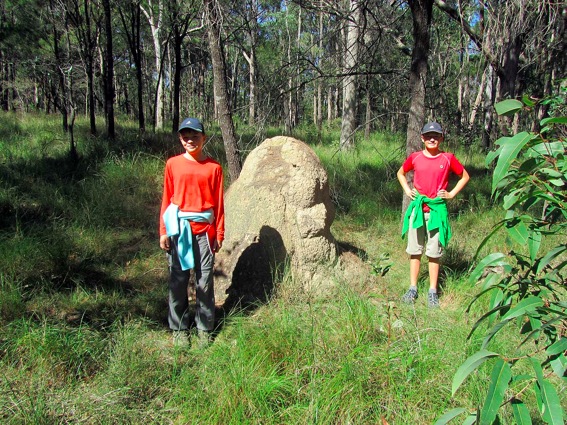
When we had finished the trail and came back to the open area by the parking lot the wallabies were still there.
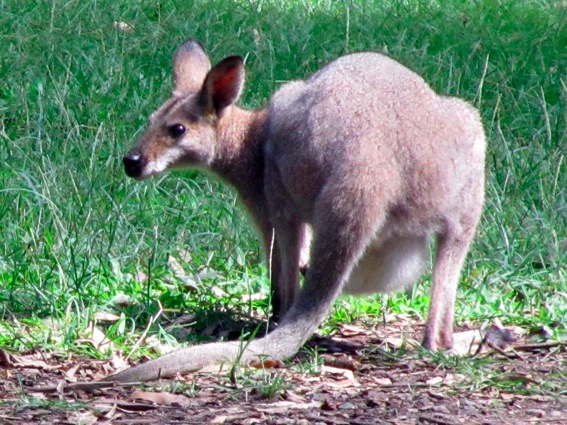
Iseline spotted one with a baby in its pouch! A young marsupial in the pouch is called a “joey.” This one was still very small, Sharon and Warwick told us from the photos that it had probably never been outside its mother’s pouch:

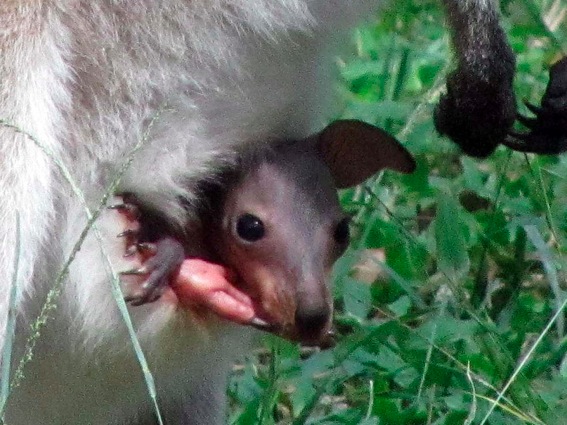
The reproductive system of the marsupials, which include animals such as kangaroos, koalas and the tasmanian devil, is very interesting. Come to think of it, the evolution of different types of mammals is a very interesting story.
During the reign of the dinosaurs mammals were small animals surviving in the shadows of the giant reptiles. About 150-125 million years ago mammals split into three distinct groups, monotremes, marsupials and placental mammals, each with their unique adaptation of the mammalian reproductive system. They all kept the milk production of the mother, warm-bloodedness, hair and/or fur, three middle ear bones used for hearing and a few other things as their common traits.
Of the three groups the least known subgroup is probably the monotremes. This group only has 5 surviving species today and include the platypus and the echidna. These mammals lay eggs. They are called monotremes because the poor females of these animals only have one opening to take care of all reproductive and digestive waste disposal purposes. The mothers produce milk, but have no nipples, the milk simply comes out through the skin, like sweat does. Monotremes are today only found in Australia and New Guinea.
Then we have the marsupials. These animals are slightly more fortunate and the females have been blessed with 2 holes to cover the functions of defecation, urination and reproduction. I guess they are happy that one of the holes has been reserved uniquely for reproduction purposes. This opening also splits immediately into two, leading to two separate vaginas. And, the males actually have a two-pronged penis. How about that, a double wiener!
Marsupials first showed up on the evolutionary scene in what is today China, about 125 million years ago. They have a somewhat lower metabolism than the placental mammals, which combined with their bizarre reproductive system makes them very well adapted to harsh climatic conditions. When a female marsupial is fecundated the fetus develops a little bit and she can then keep it at the same very early developmental stage until she is ready to give birth, e.g. when food supply is good. The baby is born about the size of a jelly bean and crawls into the pouch (the marsupium) where it attaches to a nipple and holds on tight. The offspring stays in the pouch for a long time, until it is ready to survive outside of it, often for as long as a year. When the joey is outside the pouch and still receives milk the female can even produce two kinds of milk. One for the large joey and one for another newly born joey in the pouch.
Since the young are separated from the body of the mother after only 4-5 weeks of development there is no need for a placenta to separate the immune systems of the two bodies. Also, if food supply is low, the mother does not have to finish an expensive pregnancy, but can abandon the young to secure her own survival.
Interestingly enough the marsupials spread from China to the North-East, worked their way over to North-America, then spread down to South America. They found their way to Antartica while the climate there was still mild and there was a land bridge from South America. Finally they spread to Australia from Antarctica about 50 million years ago. It is believed that probably only a single species crossed the then short ocean stretch between the two continents. In Australia they were immensely successful in the harsh hot and dry climate and completely replaced all placental mammals there. From Australia they spread north to New Guinea and also reached the Sulawesi region of Indonesia. Marsupials have nearly completed the circle and have almost reached their ancient homeland of China.
Even though the marsupials are by far most successful in Australia there are also many marsupial species in South America and a single one in North America, the opossum.
As far as the placental mammals are concerned, you know the story. Tits, three female holes down there, single vaginas (and wieners) and a prominent species which is about to ruin the earth.
Ooops, now where was I? Oh, yeah, there were also some cool birds around. The first one is kingfisher:
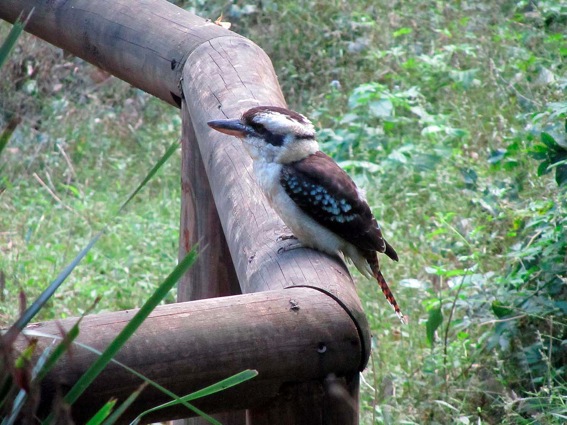


We visited the koala center at the entrance to the park.
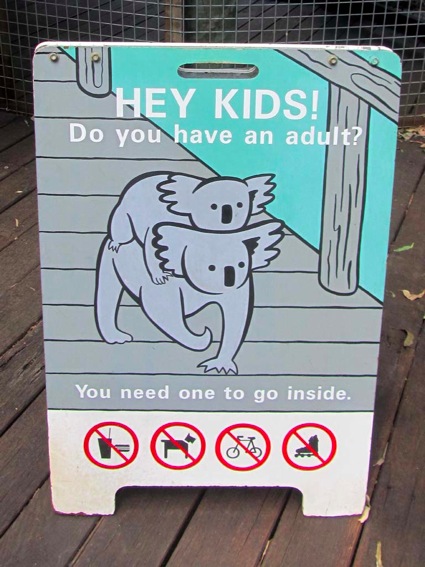
We were lucky and one of the koalas they had there woke up for about 20 seconds, stretched its limbs and went back to sleep:

In the evening Martin and Karina and Andrea and Darryn came over for a barbecue. Warwick prepared his sizzling surprise dish:
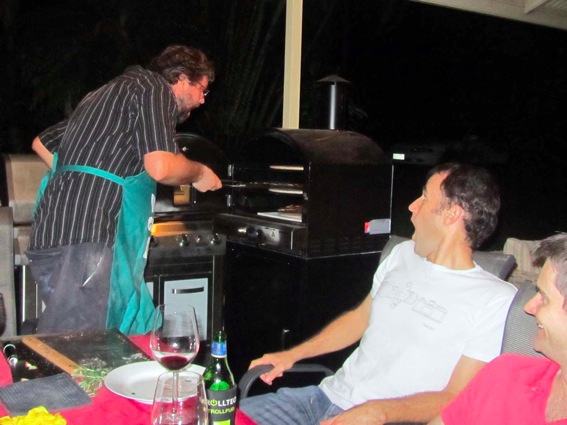
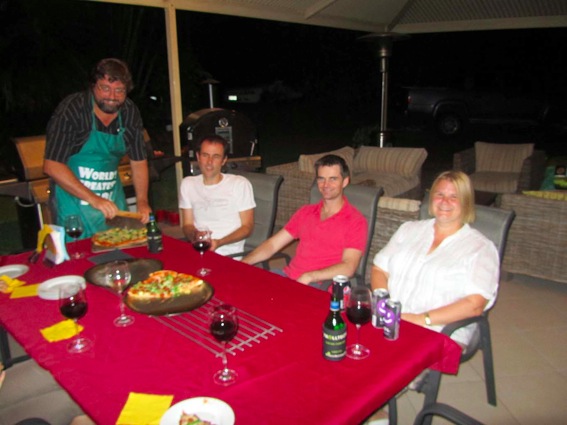
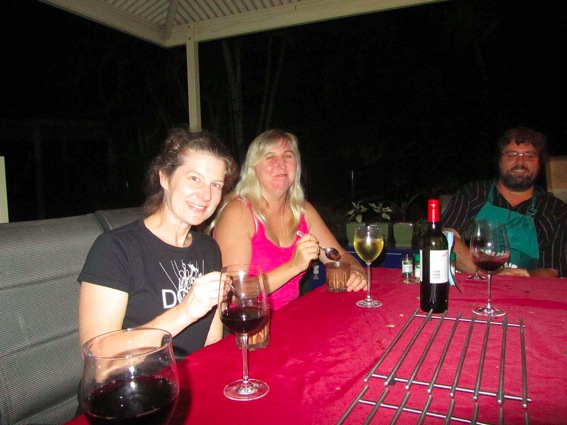
Our time in Australia is coming to an end, and so is our voyage. Tomorrow we head for Thailiand.
Eirik
—–





20 hours of sleep a day?!? Sounds like paradise…
The catch is that you only get to eat eucalyptus leaves.